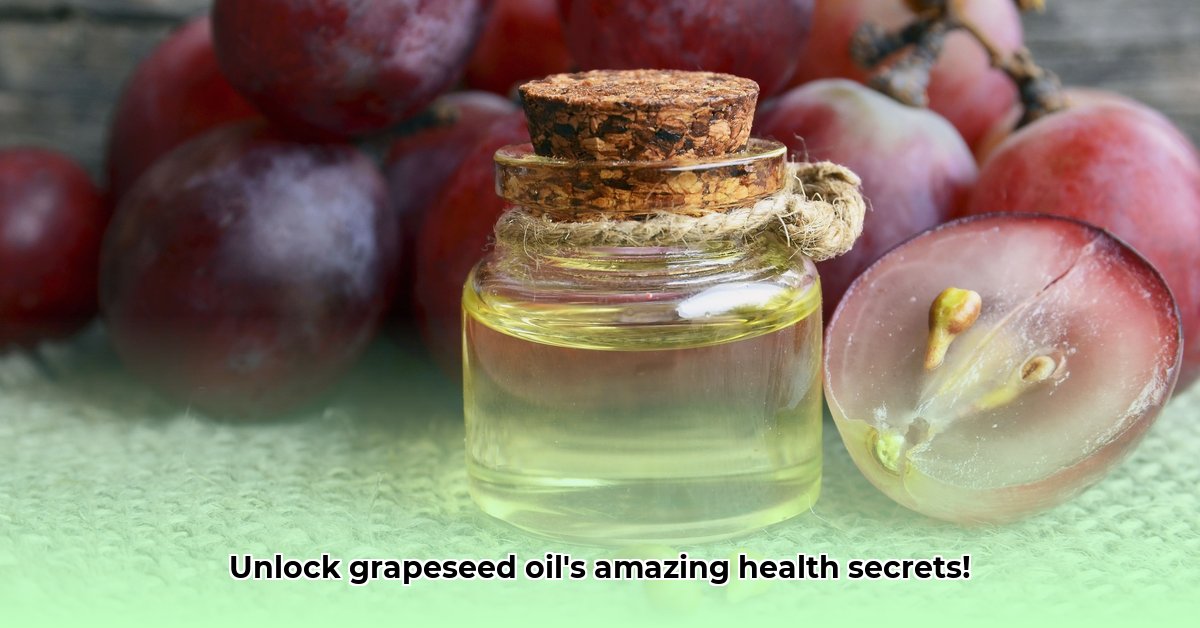
Grapeseed Oil: A Comprehensive Review
So, you’ve heard the tjotjo about grapeseed oil – that fancy oil made from leftover grapes after winemaking. But is it kwaai enough to warrant a place in your kitchen or skincare routine? Let's delve into the facts, separating hype from reality. This review explores grapeseed oil's potential health benefits and risks, helping you make informed choices.
What's the Deal with Grapeseed Oil?
Grapeseed oil isn't just a pretty face in your salad; it's packed with nutrients. It's rich in vitamin E and healthy fats, making it a potential boon for your health and skin. However, understanding its pros and cons requires a more detailed look.
Nutritional Breakdown: What's Inside?
Grapeseed oil is brimming with antioxidants – those natural fighters against cell damage. Vitamin E is a key player, vital for skin health and overall wellbeing. It's also a good source of linoleic acid, an omega-6 fatty acid. But remember, balance is key!
Potential Health Benefits: What the Research Shows
Some studies suggest potential benefits: improved blood sugar control and heart health support. However, more research is needed to confirm these claims conclusively. While promising, it's crucial to avoid overstating the evidence.
The oil's anti-inflammatory properties, likely thanks to its antioxidants, might offer relief from inflammation-related conditions. But again, further research is essential to solidify these potential benefits.
Grapeseed Oil for Skin: The Beauty Aspect
Grapeseed oil's light texture makes it a popular skincare ingredient. Many believe it improves hydration, reduces redness, and soothes irritated skin. It acts as a natural moisturizer, but more robust clinical trials are required to verify these anecdotal claims.
Potential Risks & Considerations: The Other Side of the Coin
While the benefits sound fantastic, potential downsides need addressing:
- Omega-6 Content: Grapeseed oil is relatively high in omega-6 fatty acids. While not inherently bad, an overabundance of omega-6s could be problematic for individuals already consuming high amounts. A balanced intake is crucial.
- Processing Methods: Some grapeseed oils are processed using hexane, a chemical solvent that raises concerns for some. Opting for cold-pressed, organic grapeseed oil mitigates this risk. Always check the label!
- PAH Contamination: Some oils may contain Polycyclic Aromatic Hydrocarbons (PAHs), potentially harmful substances. Choosing reputable brands with strict quality control significantly reduces this risk.
How to Choose the Best Grapeseed Oil: A Buyer's Guide
Choosing the right grapeseed oil involves careful consideration:
- Look for "Cold-Pressed" and "Organic": These labels indicate gentler processing, preserving more nutrients and minimizing chemical exposure. Avoid vague descriptions!
- Check the Ingredient List: Pure grapeseed oil should list only that. Extra ingredients raise red flags.
- Prioritise Reputable Brands: Brands with transparent sourcing and strong quality control measures are your best bet.
- Consider Sustainability: Opt for oils from companies committed to sustainable farming and packaging.
Key Takeaways: The Bottom Line
Grapeseed oil presents potential health and beauty benefits linked to its antioxidant and fatty acid profile. However, many claims require further scientific validation. Choosing high-quality, cold-pressed, organic oil from reputable sources minimizes potential risks. Always consult your doctor before making significant dietary changes.
Remember: Moderation is key. Integrate grapeseed oil gradually into your diet or skincare routine.